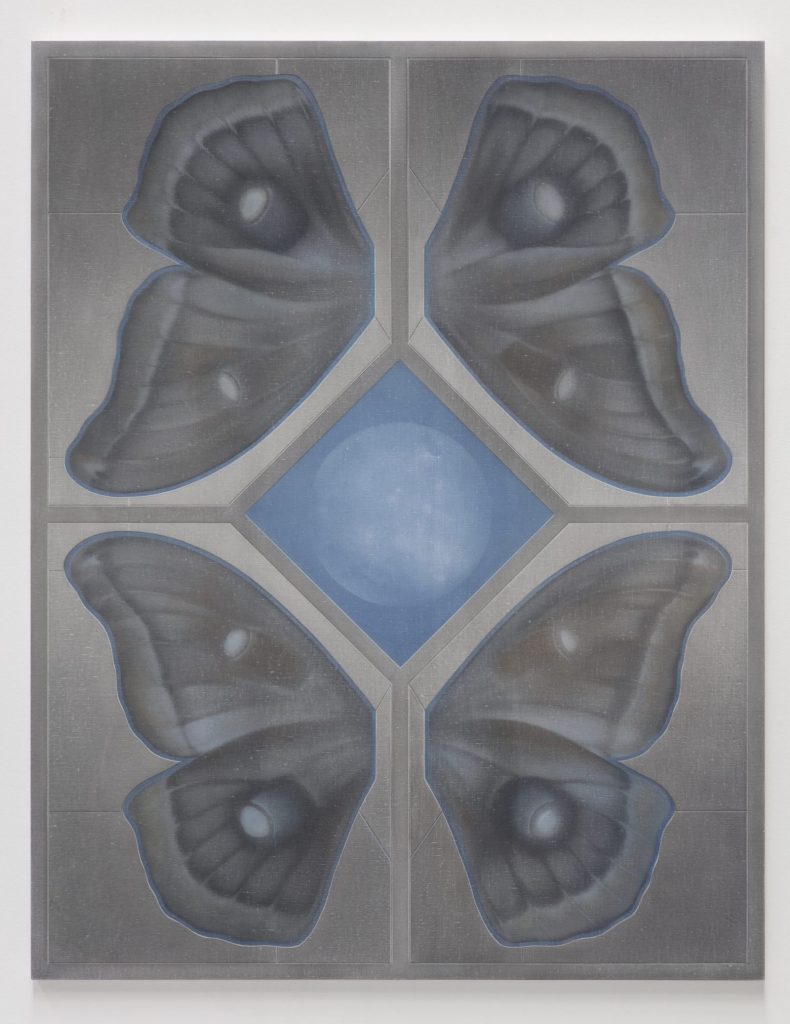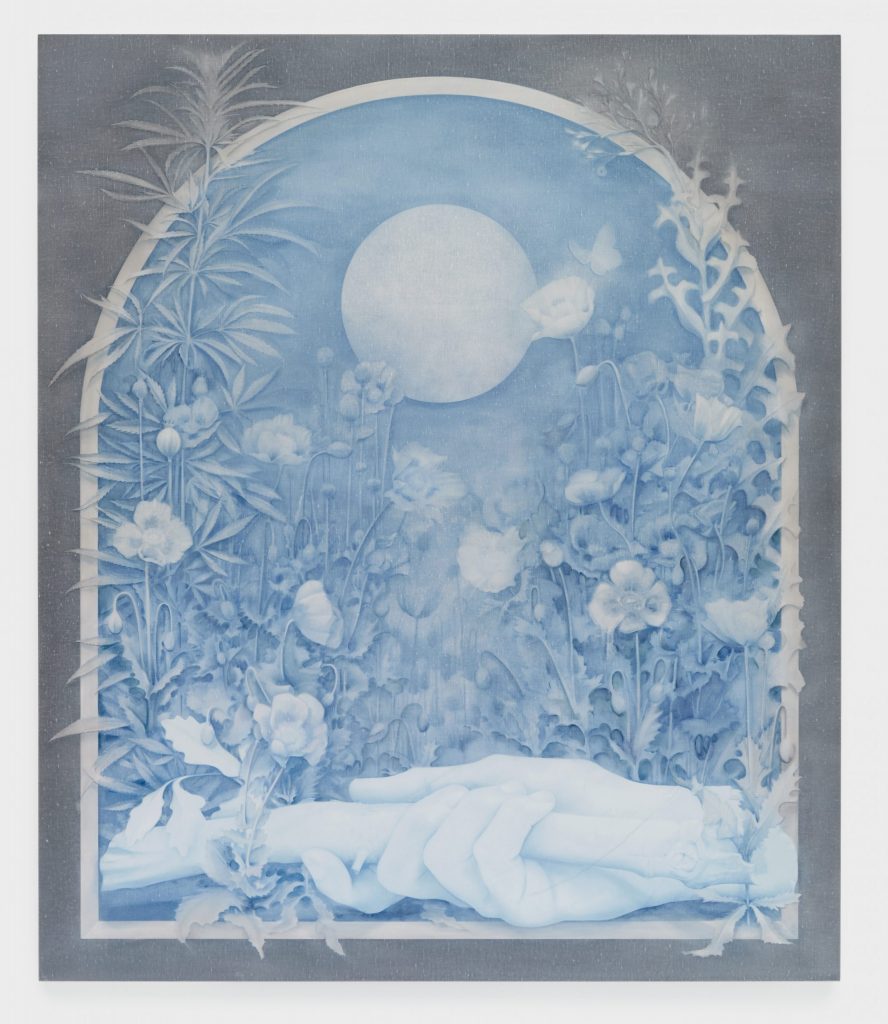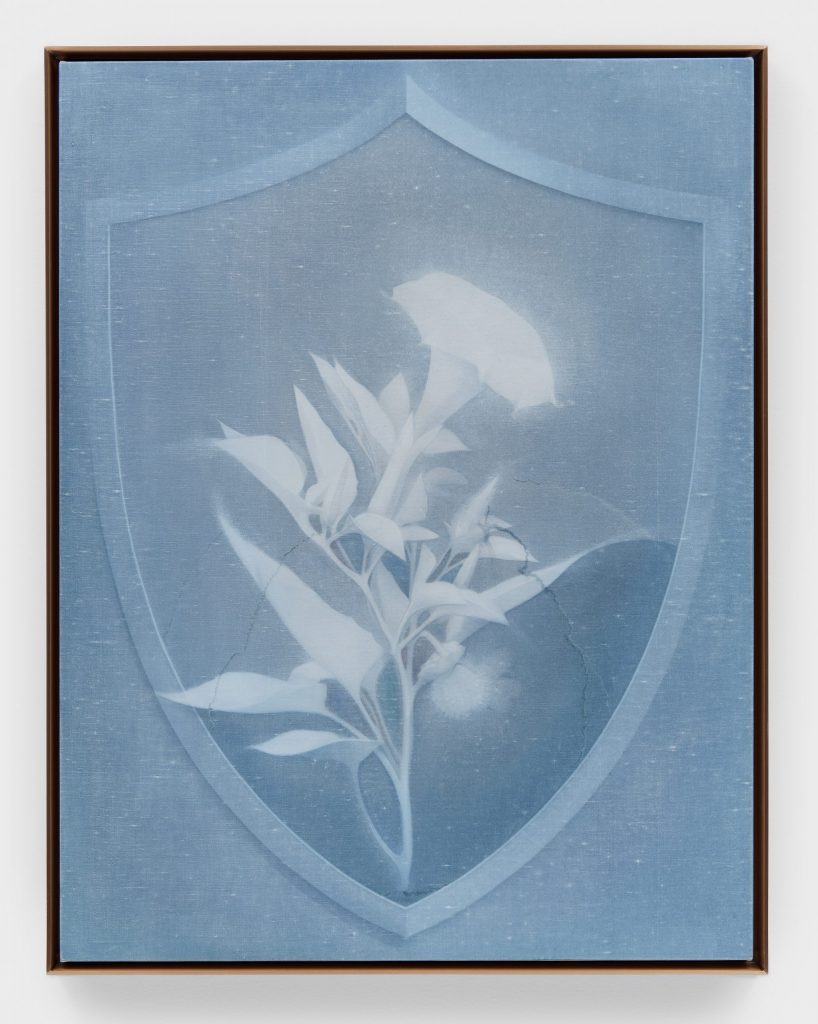In (And Out Of) The Blue: Theodora Allen

Soft, yet precise: artist Theodora Allen’s tableau of works offers an ethereal image of nature; of worldly objects and untamed beasts. Each painting holds an aura of the Los Angeles-born artist’s unique artistic form and composition: process and the interplay between. Allen’s work is drawn from a love of music, myth and nature. Her methods give a sense of the fluidity of time and the fleetingness of our earthly existence. The artist, born in 1985, always loved to create and spent time honing her skills. She graduated from the Art Center College of Design (Pasadena) before completing a Master in Fine Arts at the University of California, Los Angeles (UCLA). Her work has been exhibited at a number of prominent art galleries including the New Wight Gallery (Los Angeles), Sprüth Magers (Berlin) and Almine Rech (New York). She is represented by Blum & Poe (Los Angeles/New York/Tokyo) and Kasmin Gallery (New York). Her work is rooted within the theoretical space of humanist thought – the desire to find meaning and purpose in life – she speaks to FRONTRUNNER about her continual evolution.
Your work appears to have a rather ethereal look to it. Talk me through the inspiration behind your work.
The ethereal quality is the result of a pretty specific process. It involves adding and removing paint, and building up opacity very slowly, layer by layer. Through this action of concealing and revealing, there’s a coaxing of the image that takes place. It’s rarely direct, often circuitous; It’s introspective, and sometimes meditative. It’s a feeling, and the feeling feeds into the inspiration.
What are you hoping to portray through your paintings?
Quietude, order, harmony, balance, and distance. Permanence and ephemerality.

From the Watchtower (Double Moth no. 4), 2020
Oil on linen
58″ x 45″
Courtesy of the artist, Kasmin (New York), and Blum & Poe (Los Angeles/New York/Tokyo)
You have what appears to be a rather unique method of using oils, painting on a thin layer, and wiping it away before applying the next. How did you develop this method and what did you hope to achieve with it?
The aim is to get the surface and the image to work synergistically. In a sense, the memory of paint, the removal of the hand, this making and unmaking of the painting, all confirm the evanescence of the subject matter. For how enigmatic they are as pictures, their formal makeup conceals nothing — every layer is visible on the surface. It’s a very unforgiving process. I began experimenting with these ideas when I was in grad school. At the time, I was working through ideas rather quickly, like a painting a day, and would often end up wiping down the surface before I left the studio…you could call me a perfectionist. I discovered that the ground held onto the traces of the day’s work. This idea of painting by erasure interested me. Rather than covering with texture, opacity, and marks, I was stripping the painting down, and simultaneously pushing the image back.
What other unique methodologies do you use in your practice?
The “Distillation” paintings have their own internal logic as well. With this work, I reduce an image into a symbol by combining geometric shapes that all share the same mathematical proportions. The pieces fit together just so, like a puzzle; They serve as the maps legend to parallel bodies of work in the studio. The result is both flat and illusionistic. It’s a series I’ve been fleshing out for the past 6 years. They were hearts and furnaces in 2014, and cosmic candles in 2017. The most recent iteration has the shape of a lyre wrapped around a circular opening in the composition.

Monument, No.2 (2018)
Oil on linen
67″ x 57″
Courtesy of the artist, Kasmin (New York), and Blum & Poe (Los Angeles/New York/Tokyo)
How would you say your work evolves in the process of a single painting? How true is the final product to your initial vision?
There are forms that I strive to preserve in each painting, and often they serve a structural purpose for the composition. It’s a bit like working from an architectural blueprint. There are also a multitude of variables at play which are left open: How precise, or diffuse? Polluted or pure? How crystalline? I always leave room for change and evolution. The most exciting paintings for me involve a major change while I’m in the thick of it; these are the ones that I learn the most from. They’re not always successful, but they take me down a different road.
What role models, if any, have driven your practice and what did you learn from them?
I worked with Lari Pittman at UCLA. His work ethic, precision, and distinct visual language made a strong impression on me… and he’s never rested on his laurels.
What first drew you into the world of art and a career within this space?
I’ve always felt compelled to make things, and my parents really carved out a space for that. I had progressive education as a child, and later attended an art high school, where half of the day was dedicated to studio art. I left high school early, and did a foundation arts program in London, followed by undergraduate and graduate art in Los Angeles during my 20’s. It’s been the one path, pretty steadily.
If you look back at when you first began to how your work looks now, how would you say you and your work have evolved over time?
Again, for as long as I can remember I’ve been interested in music, poetry, and painting. It’s a sensibility. The work I’m making now is more nuanced than it was 10 or 15 years ago. I’ve had a disciplined painting practice for the past decade. I imagine the work will continue to evolve, as I continue to evolve. Stasis is death.

The Triad (2017)
Oil on linen
20″ x 16″
Courtesy of the artist, Kasmin (New York), and Blum & Poe (Los Angeles/New York/Tokyo)
What are some of the key challenges in today’s world when it comes to producing art and also making it a viable means of living?
All of the obvious ones—making a living as an artist can be harrowing. I’ve been lucky to work with honest, and reliable people though, which is very important for the cause.
What are some of the key lessons you’ve learned over your time as an artist that you’d like to share with emerging artists?
I’m of the mind that it’s necessary to work often and hard, and develop a rigorous studio practice that feels personal and meaningful to you. Write about your own work whenever you can.

Shield (Jimsonweed), 2018
Oil on linen
26″ x 20″
Courtesy of the artist, Kasmin (New York), and Blum & Poe (Los Angeles/New York/Tokyo)
What are your aspirations for the future for yourself as an artist and your work?
Just to keep honing in. I don’t have any specific designs for what my work, or life for that matter, needs to be.